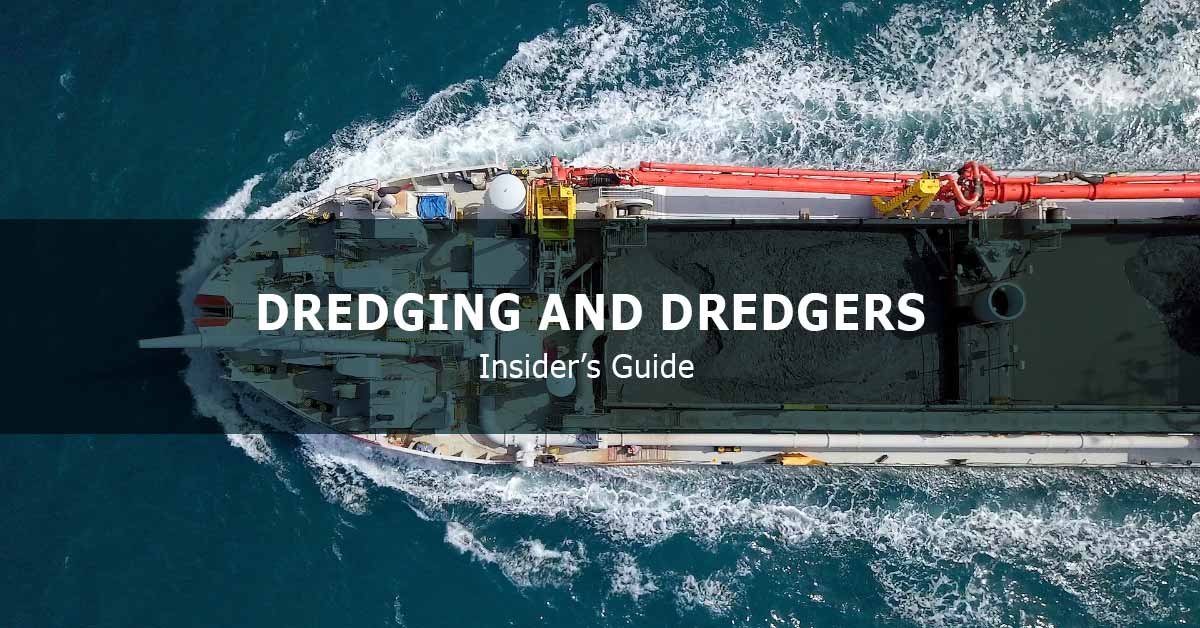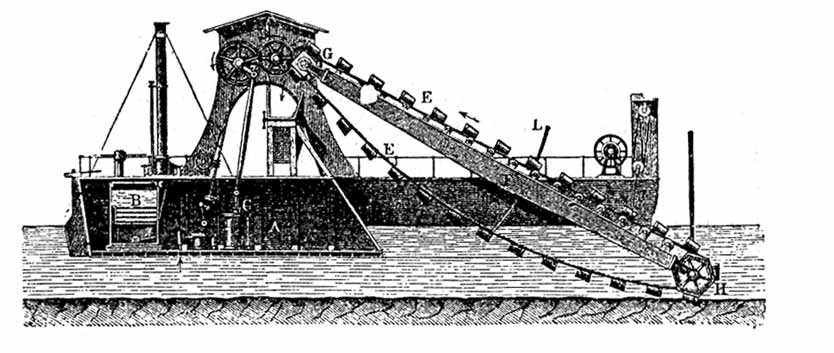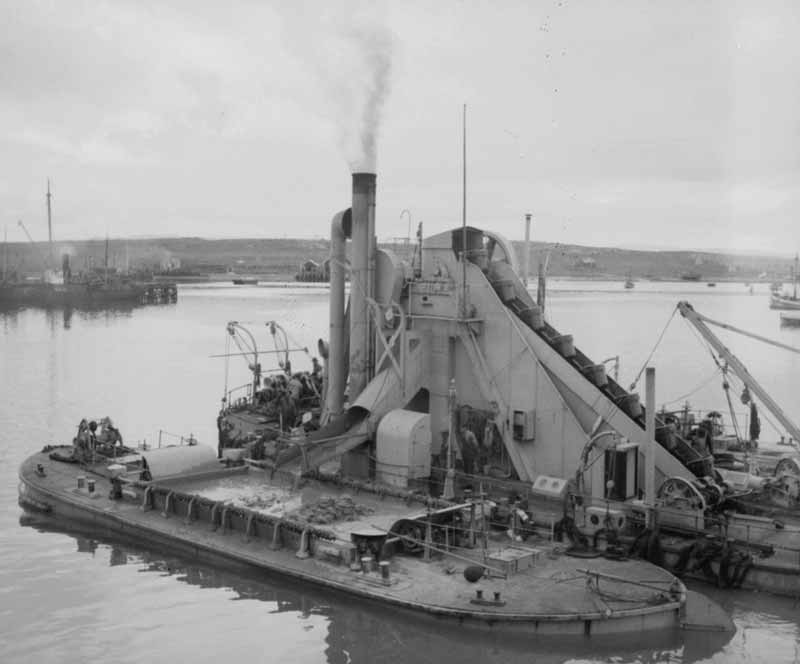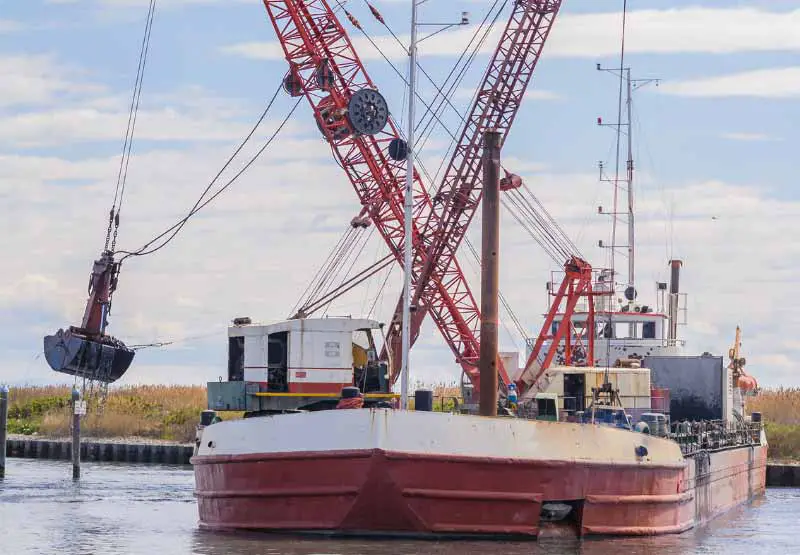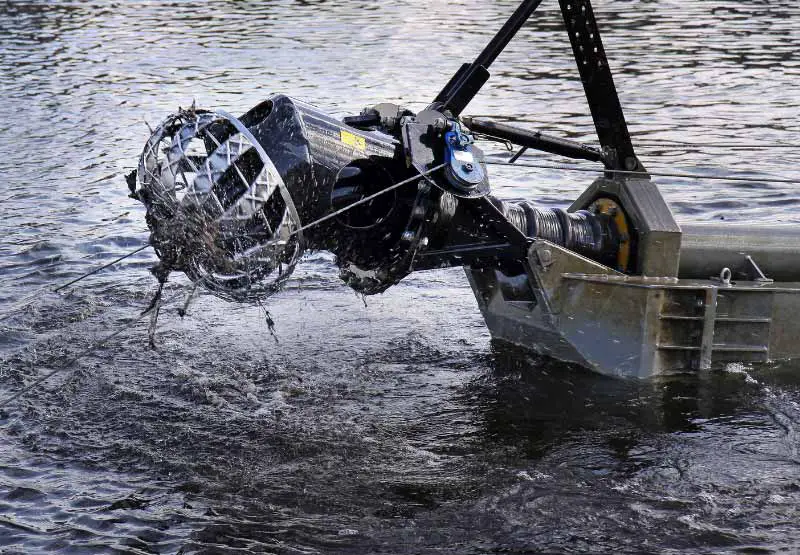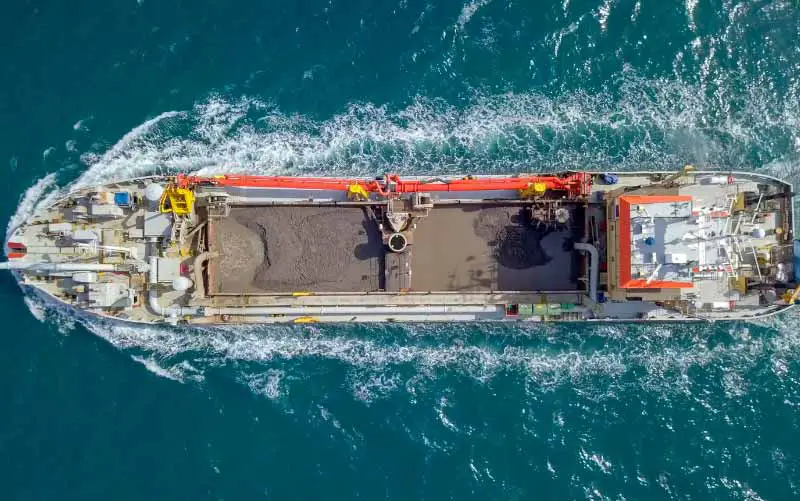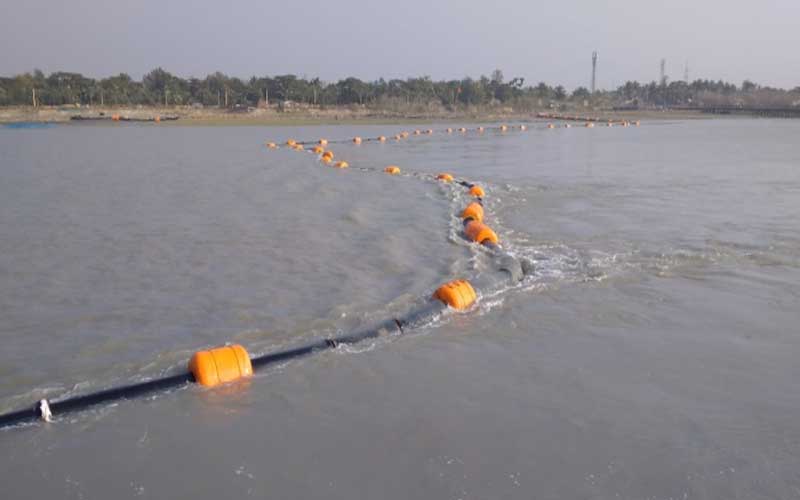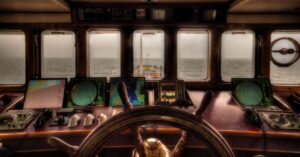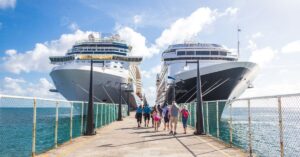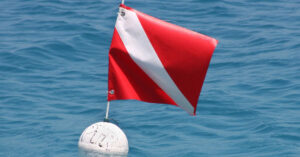Deeper and wider water channels mean bigger ships transport more goods and people. However, the natural phenomenon of sedimentation over the water floor and movement of the silt affecting the effective water depth are a constant challenge to these channels, which led to the conceptualization of what we call ‘Dredging‘ for removing these unwanted sedimentations and deposited foreign materials (ropes, chains, nets, rocks, and garbage) to ensure these channels are operable.
Dredging is the process of removing deposits settled at the floor of a water body utilizing mechanical operations using marine dredgers. Dredging may be done to clear the channel for marine vessels to transit or any civil construction projects and parts thereof. the process is a combination of excavation, transportation, deposition of the dredged materials. The dredged material extracted may be used for other projects/operations as per the excavated material properties.
Type of Dredging
In terms of project descriptions, dredging is usually categorized as:
- Capital dredging: This dredging normally denotes projects which involve dredging as a one-off operation. The formation of a new bed configuration in terms of orientation, width, depth, and susceptibility to erosion due to currents. These works primarily involve the payment of a single capital sum, hence the name.
- Maintenance dredging: This is used to describe dredging, which is repetitive over a given time. The primary objective here is to maintain the desired bed configuration or channel properties. This may be cyclic or periodic in nature.
The local/international legislation will also govern the type of dredging in those waters. Every dredging system is designed for optimum site and project conditions to deliver maximum productivity and system efficiency. It needs to be understood at this point that, unlike a land-based excavator, these dredging systems are often designed to work in unison with multiple systems; hence they are often referred to as ‘Dredging Plant.’
What is the purpose of dredging?
There is various reason to conduct dredging of any water body. Each water body may have different characteristics requiring different types of dredgers for the job. The need for dredging usually arises to maintain or achieve a specific bed configuration disturbed by natural phenomena such as current, erosion of the shoreline, and natural calamities or those caused by artificial deposits such as trash, sunken boats, abandoned chains and anchors, etc.
The need is also dependent on local socio-economic reasons. Environmental factors are often one of the major causes since water sources are a dynamic environment, and there are events such as erosion, sedimentation, and current at all times.
These needs can be summarized as follows:
- Maintaining or achieving depth in a marine environment for safer voyages by ensuring underwater clearances from ship’s/boat’s keel.
- For facilitating civil construction projects for megastructures such as bridges, dams, etc. The dredged material may be used to create optimal ground bases for these structures.
- Replace the type of bed material underwater with more acceptable deposits.
- Collection of construction material for civil projects or extraction of minerals and gems.
- Environmental supportive activities.
Type of Dredgers
A Dredger is a vessel or a floating plant designed and equipped to excavate, reshape or move the materials deposited on the sea bed, effectively reshaping the topography of the sea, lake, or river bed. The behavior of the deposits while dredging significantly affects the dredging process. The type of dredging is also influenced by the probable environmental effects of the process on the local ecosystem. Hence, dredging engineers are particular about the soil/sediment/dredge material characteristics.
Dredgers may be categorized as follows:
- Mechanical dredgers: best suited to operate in confined waters through mechanical operations. The sediments may be picked individually by the controlled selection, creating them useful for most dredging operations. However, their work speed is relatively slow.
- Hydraulic dredgers: They are designed to work on the principle of adding large amounts of process water to change the original structure of the sediments.
- Other dredgers: Non-conventional designs and custom dredgers that may be engineered on the need of a specific project and do not satisfy the above state types.
Mechanical Dredgers
Mechanical dredgers are the most commonly implemented type of dredgers for rivers and confined waters. The dredger buckets are operating with standard hydraulic/pneumatic powered motor drivers. Mechanical dredgers are equipped with a pincer grab or a bucket. These are lowered into the bed and scrapped with their leading teeth. The sediments are collected on the bucket and extracted from waters, and dumped at the designated points. These dumping points may be inside or outside the dredger.
Depending on the plant design, mechanical dredgers may be categorized as follow:
1. Bucket Dredgers
A conventional and oldest type of mechanical dredger. The dredger itself is usually a combination of a barge with a bucket arm. This is a typical land excavator coupled with floating pontoons. Loose rocks and decomposed boulders are dredged easily. Since the buckets have teeth on the leading edges, they can operate efficiently.
2. Bucket Ladder Dredgers
These are modified versions of the bucket dredger. The buckets (there are multiple buckets on one arm) are controlled through winches. The dredger itself (the bucket arm and control room) is anchored to a point and operates within the range of its arm’s length. The buckets are fashioned as an endless loop (around a circular disc or a conveyor system) that constantly scrap, excavate and return, deposit, and re-scrap in a cycle. The deposits are made in the hopper tank/deck of the barge. They are best suited for composite materials such as cobbles, sand, and small rocks. However, these are not efficient as denser materials are tougher to collect, and fine sand and silt often slip out of the buckets.
3. Grab Dredger
Stationary dredgers are held in place by anchors or spud-poles. The wire-operated clamshell grabs are used to dredge and load the material on a barge of hopper tank. The grabs may be of various configurations based on the sediment type. Some grabs are also watertight in nature; the capacity may range up to 2500 m³. This is largely dependent on crane power. These are efficient accessing corners and closer to quay walls. Since the grabs are not powered for high grip strength, they are deployed for general-purpose gravel, rock, and coarse sand dredging. No cutting action is delivered. Hence, they may need to be equipped with at least two types of grab buckets.
4. Backhoe Dredgers
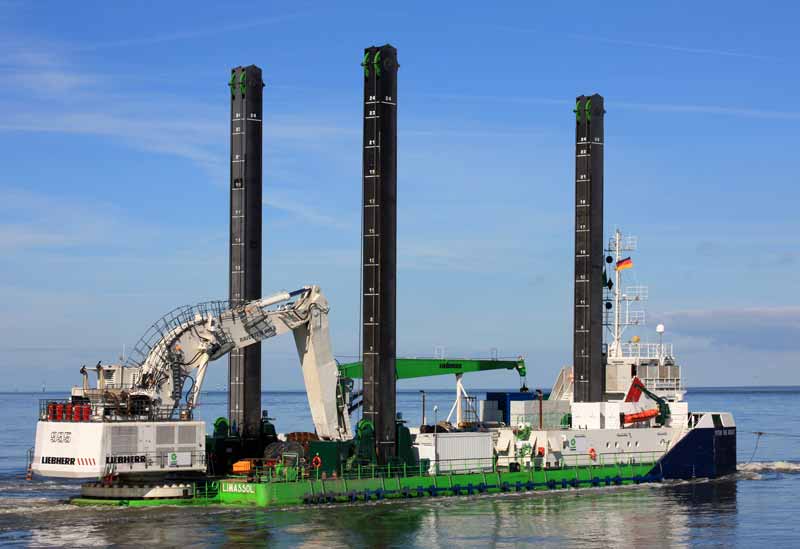
Also knows as Dipper dredger and similar to the standard land excavator. These are hydraulically driven buckets with teeth at the leading edge, which are used to excavate a wide range of sediments. They can cut through soft materials but something like a rock. The bucket empties the dredged materials on a barge, which works in close quarters. These dredgers efficiently excavate sand, but the efficiency drops with dense and very dense materials.
Hydraulic Dredgers
Hydraulic dredgers have a working principle of turning the sediments in suspension form and then pumping them through an enclosed channel using powerful pumps. These pumps are creatively known as Dredge Pumps. They are one of the biggest types implemented in the marine industry and have heavy-duty construction. These hydraulic dredgers are best suited for fine materials which are lighter. Bigger dredge pumps may be used to remove gravels as well. Hydraulic dredgers are relatively more efficient in terms of dredging rate.
1. Suction/ Cutter Suction Dredgers
Generally deployed to excavate sand or silt deposits. The dredge material is extracted with a suction pipe which is vertically dug into the bed. This suction may be with or without the water jet. The discharge may be done in a hopper tank or a discharge dyke (an enclosed area artificially created near the shoreline to deposit materials). These may be further distributed as Plain and Cutter Suction Dredger (CSD).
The only difference in a CSD is that the suction head is fitted with a cutter with an inlet for the dredge material to be sucked inside the pipes with the dredge pump. The cutters hence suffer heavy abrasion and often get damaged in the process. Thus, these teeth are individually replaceable.
The dredging arm of a CSD can be maneuvered in vertical motion with an A-Frame pulley to adjust the depth of cut (how deep the dredger is cutting and clearing sediments) and horizontally with anchors placed on both sides which pulls the dredger in an arc motion, hence the cutter head cutting in an arc motion along with a pivot point behind the dredger (two spud poles on port and starboard sides). Hydraulic winches (Vertical + Port + Starboard side) are used for these motions to operate the high tensile wire ropes, which are periodically lubricated. Most types of sediment up to a cobble size of 200 mm can be dredged with a CSD.
2. Trailing Suction Hopper Dredger
A Trailing Suction Hopper Dredger (TSHD) is a self-driven dredger. They are designed with hopper tanks or trailers. The sediment is excavated and dumped in these tanks. Each tank/trailer has outlet gates or valves at the bottom of the hull. When the tanks are filled, the dredger is moved to the discharge point, often for long distances, and these gates/valves are opened to empty the tanks or pump them outside.
Commonly deployed for open waters, they are preferred for harbor maintenance and pipe trenching. Hopper dredges mostly dredge non-coercive materials such as soft soil and silt at very high efficiency. High-pressure water jets are often used to improve the performance further.
3. Water Injection Dredger
A self-driven dredger that employs a strong water jet for dredging to convert the sediments into suspension. As water is lighter than this suspension, either a second burst of water jet or natural currents and gravity carry them along and dispose-off at a specific site. Mud or fine sand bottoms are dredged with this method for harbor maintenance. This is a form of agitation dredging. Often preferred to be used for environmentally sensitive projects.
Arrangement of dredging plant
Before a dredging operation is started, it is important to determine all probable effects of the process on the environment, channel, nearby structures, ecosystem of the water body and those dependents on it, and the duration of sustaining those effects. The deposit patterns will also affect these deposit site factors and need to be assessed if these are acceptable.
A dredging system is a well-thought process of controlled motions and materials being displaced at all times. The dredger selection is also influenced to produce the most efficient results with the least collateral footprint. Above mentioned types of dredgers, therefore, have independent types of arrangements, but some of the variables remain the same. As can be observed, the dredgers are either equipped with internal tanks for sediment deposit or dependent on pontoons and supportive arrangements such as dumb/self-propelled barges on water and discharge dyke on land.
A dredging plant may often contain components more than just the dredger. Following are the units often working in association with each other:
- Dumb Dredger/ Self Propelled Dredger.
- Closed deck Pontoon.
- Barges.
- Accommodation House.
- Multi-Purpose Tugboats.
- Line Handling tugboats.
- Anchor handling tugboats.
- Crane Pontoons.
During the dredging process, dredgers use reference poles or floating buoys as markers to identify reference areas. The region may be enclosed with rope or wire with flotsams to minimize traffic in the dredging site area. These are fitted with reflectors and LEDs also. Dredging may often be carried out in open waters with no reference landmarks. Hence, to identify the straight line of operation, a three-point coincidence method is implemented. This ensures that the dredging is taking place in designated areas only. The points may be using buoys or flag poles, usually preferred in river operations.
Dredging material discharge and disposal
For loose or low strength sediments, suction methods such as hydraulic systems are advised. For denser seabed material, in conjunction with pumping action, sediments are dislodged by cutter heads such as CSDs. Buckets and grabs are also often used to replace the pumping process, but the productivity rate may be slower. Loading of the dredge material takes place with the dredger slowly progressing in the channel.
The dredgers, such as trailer suction and backhoe dredger, store and collect the dredge materials on-site in their inbuilt hopper tanks. While the dredging operation is carried out, there may be natural effects of current and tide. Since most dredgers are not self-propelled, they may be held in position using anchors. Thus there are anchor-handling tugs in place for such operations. A towing tug (commonly, Multi-Purpose tugboat) is also placed for dumb-dredgers for relocation and repositioning activities. Once the dredging activity is completed on-site and the hopper tanks are filled, they are removed from anchorage and moved to the designated discharge location. The cycle is repeated as long as required.
Related Article: Tugboats – Types, Application, Design, And Operations.
For the dredgers which lack such tanks, a supporting barge is stationed in the water. In this case, both the dredger and barge are placed in anchorage. The barge is then moved to the discharge point, emptied, and returned to the same spot with the help of tugs. Alternatively, a discharge point may be prepared on land in the form of dykes. Mechanical dredgers, which are dependent on bucket action, need to be at least at arm’s length from the dyke, or else the dredge materials will fall back into the water near the bay.
Hydraulic Dredgers, however, can operate at a lot of further distances. The discharge from Dredge pumps is channeled through floating pipes which are assembled on-site and contained using anchors. The dredge material is discharged into the dyke. Thus, an additional team of tugboats and barges is needed to handle the pipeline operations.
These pipelines are most susceptible to current and tide effects and may dismount from the anchorage. Since the pipeline is attached to the outlet of dredge discharge, it will disorient the dredger in such cases. Hence, proper anchor selection, anchoring point, and anchors’ weight are critical factors for safe operations. The dykes are attempted to be made watertight as far as feasible.
The length of the pipe may be restricted by the power of the dredge pump to generate sufficient pressure head at the discharge point. The discharge point may be on land or in water, in which cause natural effects are taken into account such that the dredge material is not flown back into the worksite.
There is also a variation called a side-casting dredger, which is essentially a hydraulic dredger designed as a trailer suction dredger but does not have a hopper. Instead, the dredged material is discharged using a pipeline retrofitted on a boom extending to one side of the ship. This boom allows the pipe to discharge up to 90 m from the dredger. These pipes may also be more than one increases the rate of discharge. Adding a nozzle at the ends allows it to produce a discharge jet at a long distance. These are often preferred for maintenance dredging since they do not require traveling offsite for the discharge and disposal process, saving time and cost. High production rate is one of the major advantages of side casting; however, since the discharge is short from the site, they are prone to return with water flow.
Appropriate selection of discharge site is a critical variable here to gain efficiency. It is inevitable to avoid re-depositing of the dredged material, but it can be minimized as far as possible through careful planning and proper execution. It might cause high turbidity of the water due to the intensive operation.
Environmental impacts of dredging
The increasing environmental awareness and concerns for the effects of our activities have become a major issue concerning dredging operations. Dredging is essentially disturbing the existing system of environmental formation to achieve the desired configuration. the same can create a disturbance to the balance of local marine ecosystems. Unclear understanding of the characteristics of the sediments may generate unfavorable results in the form of toxic wastes hence affecting the disposal area. These toxic substances beneath the substrate may also be released in the dredge site and enter the water stream.
Dredging productivity may often be affected due to these variables. Some of the factors which may affect productivity are as follows:
- Overflow restriction: prohibited from overflowing to minimize the discharge of dredged materials into the water column.
- Restriction of operating methods: prohibition of using a de-gassing system, causing the full hopper to have lesser dredge materials than in the unrestricted case.
- Restriction of operating rates: The production rate is limited to minimize the turbidity caused in the water channel.
- Use of slit curtains: Used in grabs to minimize the slipping fine silt; however, maintenance is time-consuming.
- Noise restrictions: Noise restriction affects the dredging method, rate, and hence higher cost is incurred.
Dredging has the potential to create the following impacts on the environment:
- Release of toxic chemicals.
- Collection of heavy metals.
- Increases in turbidity, affecting aquatic species’ metabolism.
- Secondary and tertiary impacts on the natural functioning of the ecosystem.
- Tentative toxic contamination of dredge sites.
- Changes to the topography.
Under the nature of dredging operations, the dredging industry is closely regulated by the local regulatory authorities in terms of licensing and technology being implemented in their dredging plants. It is also ensured there are no forms of illegal excavation taking place with insufficient measures being taken.

